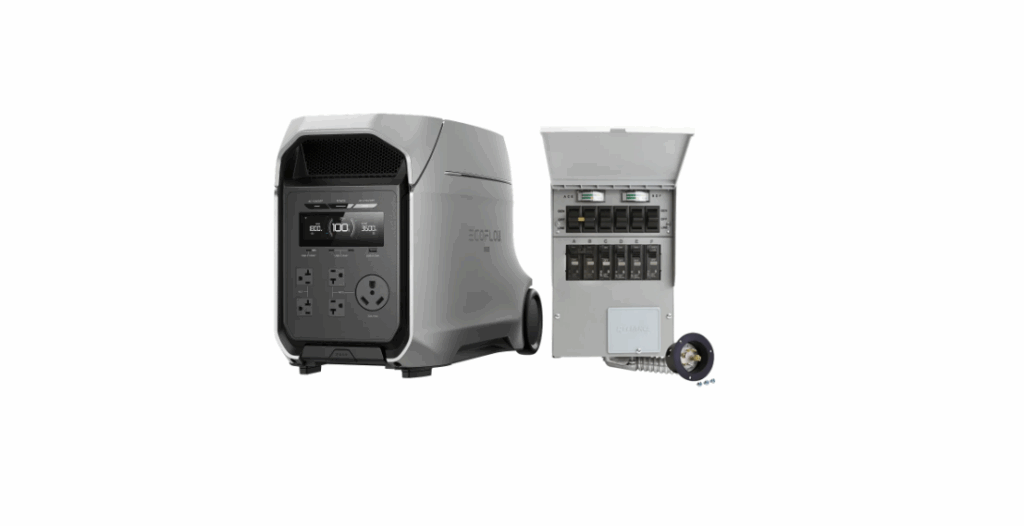In today’s era of outdoor adventure and mobile energy independence, portable power stations have become essential tools for campers, travellers, and emergency preparedness enthusiasts. With the continuous development of battery technology, fast charging and long-lasting durability are key factors in consumer decisions. But how do you find the optimal balance between fast charging and extended lifespan? You can evaluate, compare, and choose the right portable power station based on your needs.
The Core of a Portable Power Station: What Factors Affect Charging Speed and Durability?
Every portable power station consists of three main components: the battery, the inverter, and the battery management system (BMS). Battery chemistry—most commonly lithium-ion or lithium-iron-phosphate—is a key factor in determining charging speed and durability. Lithium-ion batteries charge faster and have higher energy density, making them ideal for use in compact systems that require fast charging. In contrast, lithium-iron-phosphate batteries are known for their superior cycle life, typically exceeding 3,000 to 5,000 charge cycles, although their charging speed is generally slower. Besides battery chemistry, other factors also play a crucial role. The inverter’s conversion efficiency determines how much of your stored electricity is usable, while the Battery Management System (BMS) ensures safety during rapid charging and discharging.
Fast-Charging Portable Power Stations: Convenience and Performance Combined
The biggest appeal of fast-charging portable power banks is their ability to quickly restore power during short breaks or emergencies. Modern fast-charging systems utilize high-power AC input, advanced power adapters, and integrated MPPT controllers to maximize solar input efficiency. Top-of-the-line fast-charging portable power stations can charge to 80% in just 45 minutes using AC charging, while high-efficiency solar panels can complete a full charge in as little as two hours.
However, users should be aware that increased charging speeds generate more heat—a major factor contributing to reduced battery life over time. While we employ intelligent thermal management and dual-fan cooling designs to mitigate this issue, not all manufacturers do this. Therefore, when choosing a fast-charging model, prioritize products equipped with temperature sensors, balanced cell control, and certified safety protections such as UL or CE certification. Fast charging can revolutionize mobile lifestyles, but it must be combined with robust thermal management to prevent premature battery degradation.
Long-Term Durability of Portable Power Stations
The durability of a portable power station depends not only on its external materials but also on the performance of its internal components during repeated charge-discharge cycles. For users who rely on portable power banks for years of offline living, long-distance travel, or as an emergency backup power source, energy retention, cycle stability, and sustained performance are crucial.
Durable portable power stations employ advanced cell balancing technology and conservative charging limits to extend battery life. For example, lithium iron phosphate batteries exhibit exceptional resilience even at high temperatures, retaining over 80% of their capacity after thousands of cycles. We frequently advise users who frequently use portable power banks—those who need to charge and discharge daily—that durability is more cost-effective than pursuing the fastest charging speed in the long run. A portable power bank that can reliably last 10 years is far more valuable than one that charges quickly but degrades in performance after two years.
Balancing Charging Speed and Battery Life
In engineering design, any advantage comes with its own set of compromises. For example, a portable power station prioritizing ultra-fast charging may subject the battery to higher current and thermal stress, thus accelerating capacity degradation. Conversely, a system solely designed to extend lifespan might limit charging rates to protect internal components, resulting in longer intervals between uses.
To find the right balance, customers should consider their typical usage scenarios. Fast-charging models offer unparalleled convenience for weekend campers or mobile workers who need rapid charging. However, for self-sufficient farmers, off-grid residents, or RV travelers relying on daily solar power, slow-charging, high-endurance models are a better choice. Our hybrid charging technology bridges this gap—it efficiently charges via AC or solar power while maintaining a controlled current to minimize losses.

How the Battery Management System Protects Your Portable Power Station
In portable power systems, the BMS is one of the most easily overlooked components. A well-designed BMS monitors the voltage, current, and temperature of each battery cell, ensuring balanced battery performance and preventing overcharging or overheating—major causes of premature battery aging.
The sophistication of the battery management system directly impacts the lifespan of the power station. For example, our intelligent BMS technology utilises real-time algorithms to optimise the charging curve, dynamically reducing the input current as the battery approaches full charge. This reduces thermal stress and enables rapid power recovery. When comparing portable power banks, always check for clear BMS specifications, as vague descriptions often indicate cost-cutting measures that compromise durability.
Choose a power station that suits your lifestyle.
There’s no single standard between fast charging and long-term durability when choosing a portable power station. The key is to match product specifications to your individual needs. If you frequently need fast charging, a model optimized for fast charging will be more convenient. If you prioritize reliability and lifespan, a durable model will offer greater long-term value.
